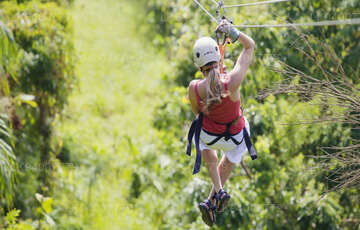

Città di Colombo
Colombo, la capitale dello Sri Lanka, è una città dinamica che fonde tradizione e modernità. Vanta un'architettura coloniale, vivaci mercati e sereni templi buddisti. Con una cucina variegata, uno skyline in continua crescita e splendide spiagge, è un vivace centro per gli affari, la cultura e il turismo, offrendo un punto di partenza ideale per esplorare le meraviglie dello Sri Lanka.
St Thomas Chapel
Ginthupitiya is a very busy region that is part of Kotahena (Colombo 13). Bustling with people; the place is jam-packed with residences, commercial buildings, public buildings, churches and temples. Ginthupitiya is also the home of the first Anglican Church in Sri Lanka, St Thomas’ Church. This simple church was built in 1816 by the British Governor Robert Brownrigg. However, the roots of its history run much deeper into the annals of time.
The History of St Thomas’ Church
Let us go backward in time to approximately 2000 years ago. It was the era when the Roman empire was on the rise. Jesus had died on the cross; crucified by the Romans who possibly considered him a political threat and a troublemaker. His twelve disciples (the Apostles) were devastated and tried their best to carry forward their master’s work. They tried to spread His word, and started traveling for that purpose.
Amongst them was the Apostle Thomas, also known as Doubting Thomas for not having believed in Jesus’ resurrection. He later became a true believer who avidly spread the message. St Thomas decided to move to India to spread the word in Asia. According to legend, it’s said that he stopped at Colombo port and did one of his very first sermons here. The port area was occupied by fishermen at the time, and they are said to have been an attentive audience. There is evidence (which is mentioned of further on in this account) to believe that Christianity may have spread briefly in the area as a result of his sermon. St Thomas went on to India after that, where he spent the rest of his life; and was credited for the establishment of seven and a half churches in India. Remains, that were believed to be his, were found in Mylapore and enshrined.
Centuries passed. Then in the early 1500s, the Portuguese invaded Sri Lanka. Their aim was not only to conquer the country, but also to spread Roman Catholicism amongst the ‘savages’.
As such they built churches wherever possible, and enforced Christianity in the places they conquered. Shrines of other religions were destroyed; and the most devout followers and leaders of the religions were killed. While all this was taking place, the Portuguese also kept an eye out for any viable places to build churches and further the spread of Christianity.
According to the records of the antiquarian Frederick Medis and according to the writings of Professor Peter Courtenay in his book ‘History of Ceylon’, it’s mentioned that there was a Nestorian cross found by the Portuguese in the Ginthupitiya area. The place was apparently called ‘San Thome Pitiya’ and there were some who practiced a rudimentary form of Christianity; pointing towards there having been a community of Persian Christians after St Thomas’ arrival. The Portuguese immediately established a church on the spot and worked hard to convert the people there. Soon the people there became devout Catholics.
But then when the Dutch took over the country from the Portuguese in the 1600s, they attempted to stamp out any evidence of Catholicism. During the widespread destruction that they wreaked during this time, St Thomas’ Church was pried out of the hands of Franciscan monks for its vantage point. The Dutch destroyed the religious symbols, and used the structure as their marine headquarters for the area. They also constructed three graveyards within the premises; one for their own countrymen, one for their local allies and one for the outsiders/non-conformists known as "Genthos" in Dutch. It is believed that it was the third graveyard that led to the name of the area being changed from "San Thome Pitiya" to “Genthopitiya". Approximately a century later, when the British took over, the displeased locals petitioned the new authorities to build them a new church. This group of locals, who were Tamil settlers from Kerala, even donated the funds to build the church; such that the British did not have to make any contributions. Many of the old materials were also reused, and the church was constructed under the direction of the Governor at the time, Sir Robert Brownrigg.
Formally consecrated in 1815, the Church became the very first Anglican Church to be built in Sri Lanka. The first church service was held on 16 July 1816, with the Rev. George Bisset conducting the Service. Rev. M. Twisleton delivered the sermon and prayers were said in Tamil by G. J. Ondaatjie.
The Church Today
Today, 200 years later, the simple structure of the church stands as testament to bygone eras. Surrounded by palm trees and sunshine, the place is quite calming and has a great view. The western wall of the church displays Brownrigg’s name. Though the inside seems quite plain, the place is livened up by an old-world charm with its white walls and finely polished wood.
Outside the church the graveyard still had some of the old Dutch tombstones. This graveyard tells a tale of artistry; from gothic sculptures to elephants, palm trees and classic European skulls; this place has it all. One of the things of note is the clear Tamil inscription on one of the graves, along with the Dutch lettering. It’s quite interesting to wander through this graveyard as it contains quite a bit of history.
Despite it’s seeming simple nature, St Thomas’ still hides many secrets that have not been found. Until just a few years ago it was undiscovered that the wooden panelling behind the altar was genuine Burmese teak, possibly brought in by the Dutch and used by the British in the style of the South Indian churches. Even more recently, excavations due to some weak flooring revealed ancient clay floor tiles buried under three layers of sand. The tiles were much older that the British era, though researchers are still unsure of the exact period.
The full extent of the historical unknowns behind St Thomas’ Church are still unknown, and only time will tell what these hidden secrets are.
Informazioni sul distretto di Colomb
Colombo è la città più grande e la capitale commerciale dello Sri Lanka. Si trova sulla costa occidentale dell'isola e adiacente a Sri Jayewardenepura Kotte, la capitale dello Sri Lanka. Colombo è una città vivace e trafficata, con un mix di vita moderna, edifici e rovine coloniali e una popolazione di 647.100 abitanti. La regione metropolitana di Colombo, definita dai distretti di Colombo, Gampaha e Kalutara, ha una popolazione stimata di 5.648.000 abitanti e si estende su una superficie di 3.694,20 km². Colombo è una città multietnica e multiculturale. È la città più popolosa dello Sri Lanka, con 642.163 abitanti che vivono entro i confini della città. La popolazione di Colombo è un mix di numerosi gruppi etnici, principalmente cingalesi, mori e tamil. In città vivono anche piccole comunità di persone di origine cinese, portoghese, olandese, malese e indiana, oltre a numerosi espatriati europei. La stragrande maggioranza delle aziende dello Sri Lanka ha sede a Colombo. Alcuni dei settori industriali includono prodotti chimici, tessili, vetro, cemento, pelletteria, arredamento e gioielleria. Nel centro città si trova il secondo edificio più alto dell'Asia meridionale: il World Trade Center.
Informazioni sulla provincia occidentale
La Provincia Occidentale è la provincia più densamente popolata dello Sri Lanka. Ospita la capitale legislativa Sri Jayawardenepura Kotte e Colombo, il centro amministrativo e commerciale della nazione. La Provincia Occidentale è divisa in 3 distretti principali: Colombo (642 km²), Gampaha (1.386,6 km²) e Kalutara (1.606 km²). Essendo il fulcro economico dello Sri Lanka, tutte le principali aziende locali e internazionali hanno sede in città, così come i principali negozi di stilisti e grandi magazzini, quindi preparatevi a concedervi un po' di shopping nella Provincia Occidentale. Avendo la popolazione più alta di tutte le province, quasi tutti i principali istituti scolastici dell'isola si trovano nella Provincia Occidentale. Le università della provincia includono l'Università di Colombo, l'Università di Sri Jayewardenepura, l'Università di Kelaniya, l'Università Aperta dello Sri Lanka, l'Università Buddista e Pali dello Sri Lanka, l'Università della Difesa Generale Sir John Kotelawala e l'Università di Moratuwa. La provincia occidentale ospita il maggior numero di scuole del paese, tra cui scuole nazionali, provinciali, private e internazionali.







































